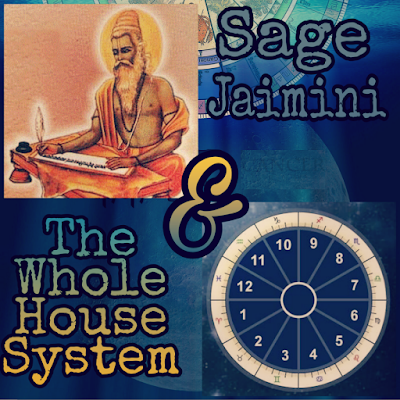In our last part of this topic, we discussed about some
preliminary concepts on the houses and different house systems that are used in
astrology by different astrologer.
Today let’s continue our discussion further.
If you haven’t read the first part of this discussion then I
recommend you to read that first for better understanding of this topic.
Read here -: Part-1
The Perfect House System
After an introduction to so many house systems, an obvious
question arises in our mind, i.e.,
"Which is the most correct house system to use?"
Well, the answer for this question is hidden in the
experiences of Vedic astrologers regarding various house systems.
First of all, among the two broad categories of house systems,
most of the Vedic astrologers usually prefer the “Linear house systems” because
of some limitations present in the “Non-linear house systems”, such as,
- They are only extensible to house from ascendant (Lagna) and not from other planets like Sun, Moon, etc.
- They are not extensible to the houses in divisional charts.
- They are inconsistent with sage Parasara’s teaching on aspects (Quantified aspects).
However; as per the need Vedic astrologers can use other
house systems as well.
For example -:
In KP (Krishnamurthy Paddhati) system for doing predictions,
astrologers prefer to use the “Placidus/Ptolemaic house system”.
While doing predictions using “Jamini Jyotish”, one can
follow the “Whole sign house system”.
Apart from this, there are some Vedic astrologers who prefer
to use the “Sripathi/Porphyry house system” to calculate the house divisions.
The dilemma of “Ascendant longitude”
In “Linear house system” the longitude of the ascendant is
always taken as the mid-point of the 1st house and then, we
calculate the mid-point of other houses as per the formula.
However, in some of
the “Non-linear house system”, astrologers used to take the longitude of the
ascendant as the starting point of the 1st house.
But, according to most of the Vedic astrologers around the
globe, it is best to take the longitude of the ascendant as the mid-point of
the 1st house and thereby calculate the span of other houses.
Approach of Western Astrology to various house systems
Western astrology seems very much confusing when it comes to
choose the appropriate house system to incorporate in their predictions.
There are a wide range of house systems that western
astrologers follow and when it comes to the “correct one” then, mathematically,
almost all the house systems are as correct as the other.
The confusion really occurs when; the astrologer observes
the shift of planet from one house to the other while incorporating different
house system for the same birth data.
Let us understand this problem through an example and its
possible solutions that most of the western astrologers recommend.
For example -:
A planet, let’s say, “Jupiter” in the 2nd house
in “Placidus house system” shifts to the 3rd house in “Porphyry
house system” for the same birth data.
Now, if this is the case and both the systems are correct
mathematically, then, which results will “Jupiter” give?
Will it be the results of “Jupiter in the 2nd
house”? Or,
Will it be the results of “Jupiter in the 3rd
house”?
Solution-1:
Some astrologers say that, in such cases it is the
“Experience” factor that determines the results. So, astrologers who have seen
the “Placidus house system” working better in terms predictions or, if they
might have experienced with a bunch of horoscopes that “Placidus house system”
works better then, they will tend to do predictions according to the “Placidus
house system” and for the above example, they will predict the results for
“Jupiter in the 2nd house”.
Same situations occur for “Porphyry house system” as well.
So, the astrologers who found “Porpheyry system” as the correct one in terms of
predictions through their personal
experience with hundreds of horoscope will give the results for “Jupiter in the
3rd house” for the above example.
So, basically, it is the personal experience of the
astrologers that matters when it comes to choosing a correct house system for
predictions.
Solution-2:
In such cases where a planet shifts its house position with
the change of incorporated house system; some astrologers uses a concept called “Overlapping boundaries”.
“Overlapping boundaries” can be understood as a portion
influenced by 2 houses at the same time and hence, if a planet is changing its
house position with the change in house system then, it is said to be in
“Overlapping boundary” and hence, the astrologers give a mixed results for the
planet in both of the overlapped houses.
So, for the above example, the result will be a mixture of
“Jupiter in the 2nd house” and “Jupiter in the 3rd house”
because, Jupiter is in the overlapping boundary of 2nd & 3rd
house.
Note: All the house systems are slightly differ in
their approach and hence, a planet can shift only one house (maximum) either in
forward or, backward direction with the variation of house system. Therefore,
overlapping of more than 2 houses is not possible and only the consecutive
houses can overlap.
Approach of Vedic Astrology to various house systems
To choose the correct house system, there is some hard &
fast rule in Vedic astrology.
Most of the Vedic astrology is based upon the teachings of
sage “Maharshi Parasara” and thus the standard/foundation book in Vedic
astrology is considered as “Brihat Parasara Hora Shastra (BPHS)”.
Here, sage Parasara gave importance to quantified aspects of
planets and houses from planets like Sun; Moon etc. apart from the ascendant
(Lagna) and it is the “Linear house system” that is explicitly usable
for all such purpose and hence, it can be considered as the most appropriate
and standard house system to prefer for any kind predictions and especially,
for predictions with Parasara’s techniques.
Again, this system is also followed by millions of Vedic astrologers
around the globe. So, there is no doubt that this system works better than any
other system.
However, when it comes to predictions using “Jamini jyotish”
then, one can use “Equal house & equal sign” system and for predictions
with “KP system”, one can use the “Placidus house system”.
Some, Vedic astrologers uses the “Porphyry/Sripathi house
system” but, this house system is not extensible when it comes to consider
houses from planets like Sun, Moon etc. , houses in divisional charts and quantified
aspects of planets.
Therefore, the “Linear house system” is the best option to
consider here, because, sage “Parasara” in his book says that “Lagna
(Ascendant)” along with “Sun” and “Moon” creates the tripod of life and thus we
have to see the houses not only from the ascendant but also from the planets
like Sun and Moon and also we can’t ignore the quantified aspects of planets
and houses in divisional charts too.
Conclusion on the debate of various house systems
Before giving the concluding statements on this debate, I
would like to inform you something, i.e., we shouldn’t have to bother about what
house system the Western astrology follows or, not because it is just a mere
offspring of the Vedic astrology and thus, if one applies all the concepts and
rules that Vedic astrology uses in the Western astrology then, they will not
get disappointment or, wrong predictions, for sure.
Moreover, this website is mostly dedicated to Vedic
astrology and so, keeping this in mind along with the essence of all the
discussions on various house systems done so far; we can get the following 3
points as our concluding statement -:
- For all kinds of in general application of Vedic astrology and especially, for sage Parasara’s techniques -: “Linear house system” must be followed.
- For discussion on the “Natural zodiac” and techniques of “Jamini Jyotish” -: “Whole sign house system” must be followed.
- For the use of “Krishnamurthy Paddhati (KP)” techniques -: “Placidus/Ptolemaic house system” must be followed.
We will discuss the “Placidus house system” along with other
“Non-linear house systems” like “Porphyry/Sripathi house system”, “Koch house
system” etc. in our future posts.
In our next post, we will dive deep into our discussion on
the same topic.
Read the next post here -: Part-3
Read the next post here -: Part-3
Thank you
(Powered by Quantum X)
In the below image; we have given our contact details. So, if you want consultation from us then you can just contact us here-:
Contact details
(you can send us Whatsapp message on the given contact number for consultation purpose)
|
All other details like our address, fee structures, different services, mode of transaction etc. will be provided to you if you are interested in getting consultation from us.






In our simple life, love plays a very specific role. Now we are able to make your love life healthy and it has no space for any type trouble. These all are possible with the help of PEACEFUL HOME SOLUTION. He helped me cast a spell that brought my long lost lover back within 48hours who left me for another woman. you can also contact him on ( peacefulhome1960@zohomail.com ) or WhatsApp on: ( +2348104102662 ) . and be happy forever like am now with his experience.
ReplyDelete